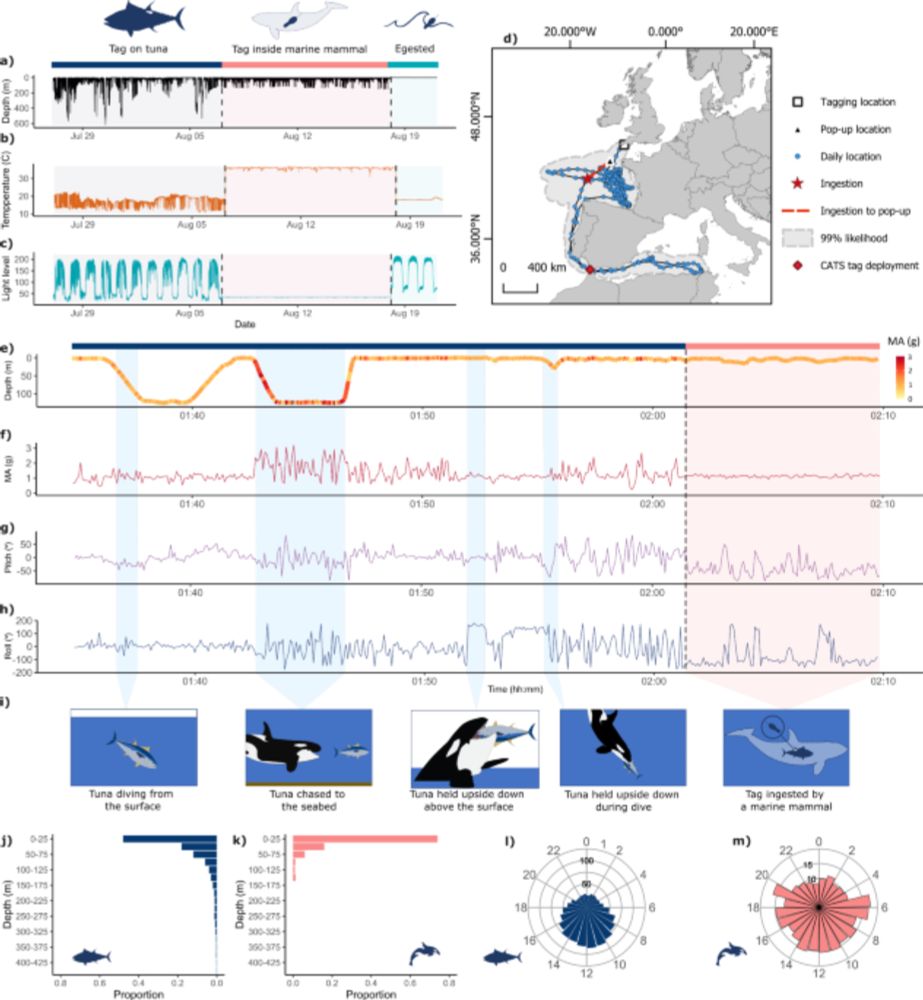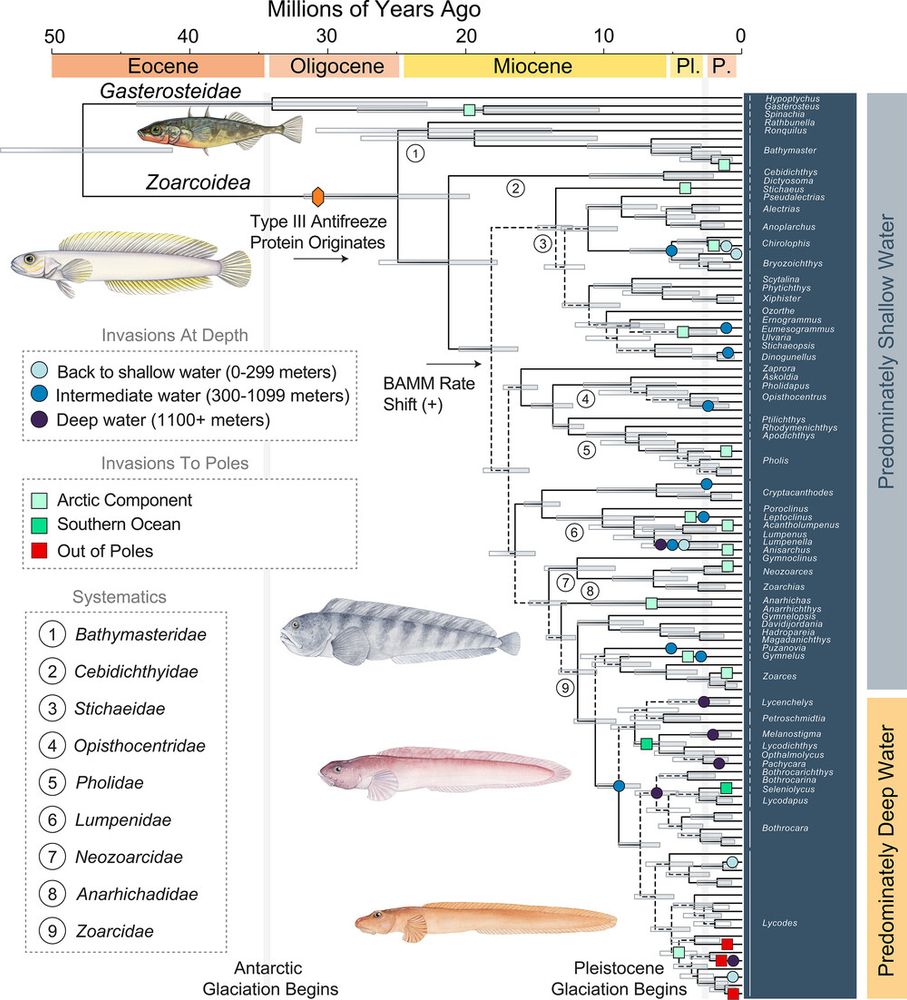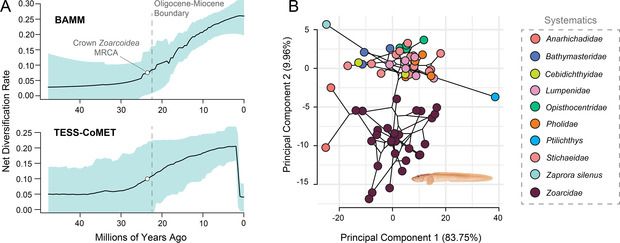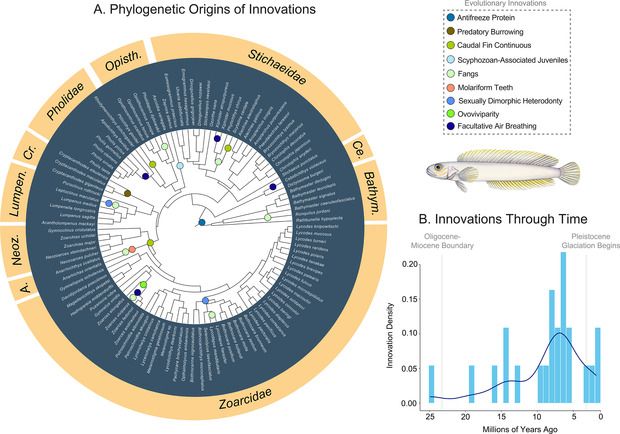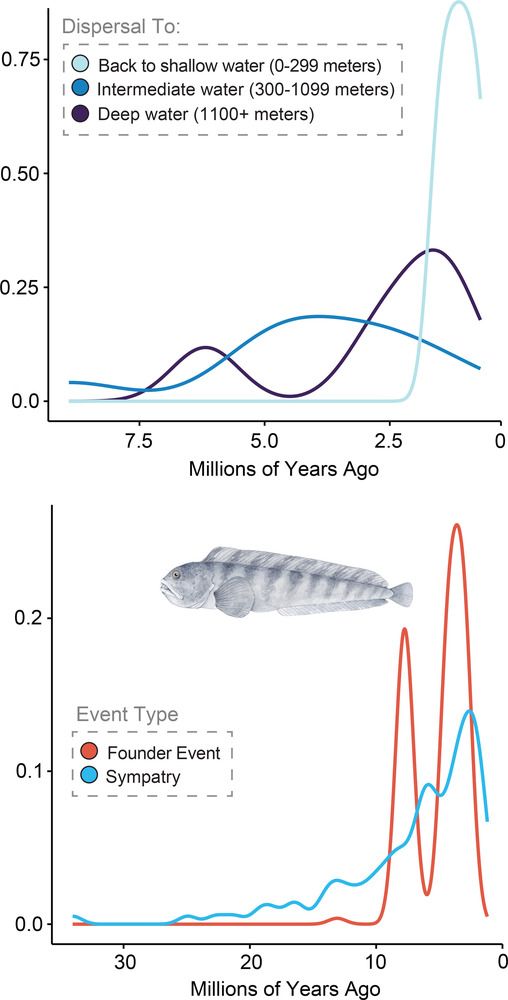My poster is currently being printed, this is the joy I will endure in the coming days.
07.10.2025 09:05 — 👍 1 🔁 0 💬 1 📌 0
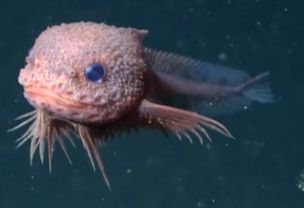
IT'S ADORABLE!
New fish species just dropped: the bumpy snailfish at 10,000 ft down in the ocean
gift link: www.nytimes.com/2025/09/08/s...
08.09.2025 19:22 — 👍 552 🔁 152 💬 16 📌 37
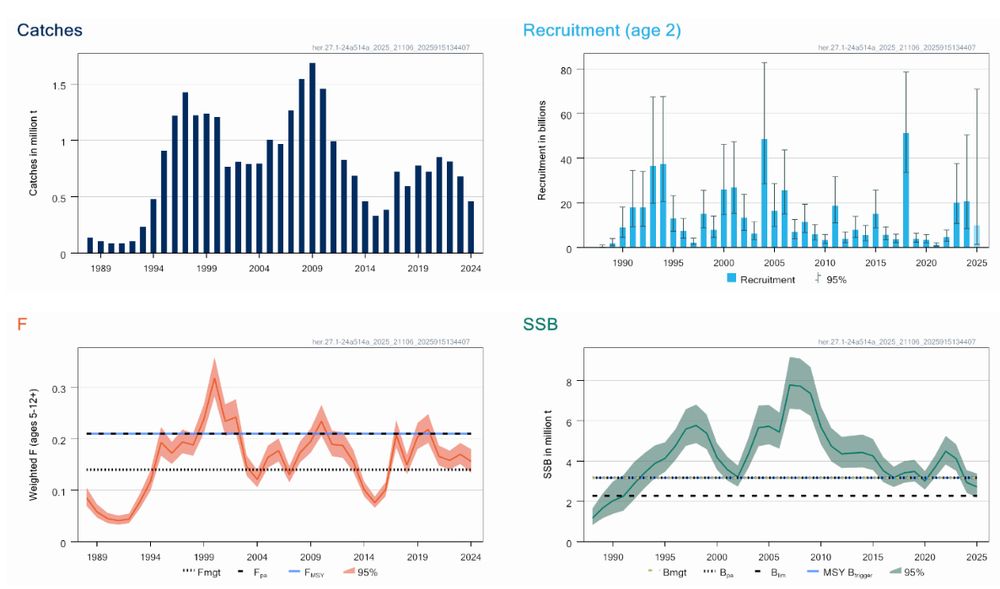
With two above average year classes entering the fishery, ICES advice for Norwegian spring-spawning herring increases by 33 % to 533 914 tonnes. doi.org/10.17895/ice...
01.10.2025 10:52 — 👍 0 🔁 0 💬 0 📌 0

After years of coastal states failing to agree to a shared TAC for Atlantic mackerel, leading to catches > advice, ICES advice for 2026 is 71 % lower than in 2025. doi.org/10.17895/ice...
30.09.2025 11:36 — 👍 0 🔁 0 💬 0 📌 0

👩🔬BioProtect PhD student Marjolijn Rika Nijzingh collected 325 #eDNA samples at 37 sites (0–500m) around 🇮🇸 aboard RV Árni Friðriksson.
The data will reveal the presence of fish, mammals, corals & more, a big step for #30x30 goals!
Amazing job Marjolijn!👏
#MissionOcean #HorizonEU @mfri.bsky.social
25.09.2025 07:00 — 👍 2 🔁 1 💬 0 📌 0
I get that the news cycle is packed right now, but I just heard from a colleague at the Smithsonian that this is fully a GIANT SQUID BEING EATEN BY A SPERM WHALE and it’s possibly the first ever confirmed video according to a friend at NOAA
10 YEAR OLD ME IS LOSING HER MIND (a thread 🧵)
24.09.2025 20:30 — 👍 29568 🔁 9956 💬 733 📌 1556

PhD opportunity @sosbangor.bsky.social on managing scallop fisheries to find the balance between conservation and fisheries yield. Get in touch if you're interested and I will email you the project description.
11.09.2025 12:56 — 👍 4 🔁 5 💬 0 📌 0
A whole podcast dedicated to lumpfish!!!
10.07.2025 11:39 — 👍 0 🔁 0 💬 0 📌 0
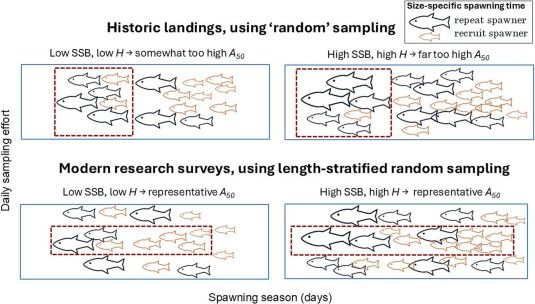
However, a new study shows that early estimates of age at maturity were too high due to biased sampling. Correcting for this results in no significant change in age at maturity over time. 2/n
www.sciencedirect.com/science/arti...
07.07.2025 15:05 — 👍 1 🔁 0 💬 0 📌 0
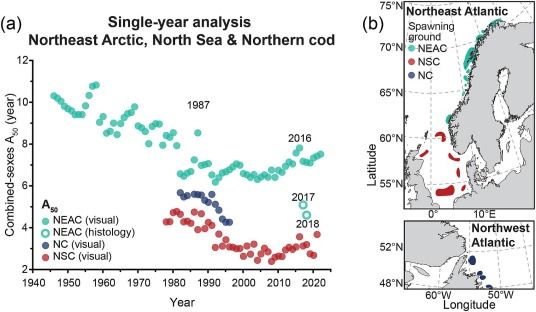
Estimated age at which northeast Arctic and North Sea cod mature has decreased over time. This was considered to be a result of fisheries induced evolution whereby fisheries caught older fish, so fish which matured younger were more likely to spawn. 1/n
07.07.2025 15:05 — 👍 0 🔁 0 💬 1 📌 0
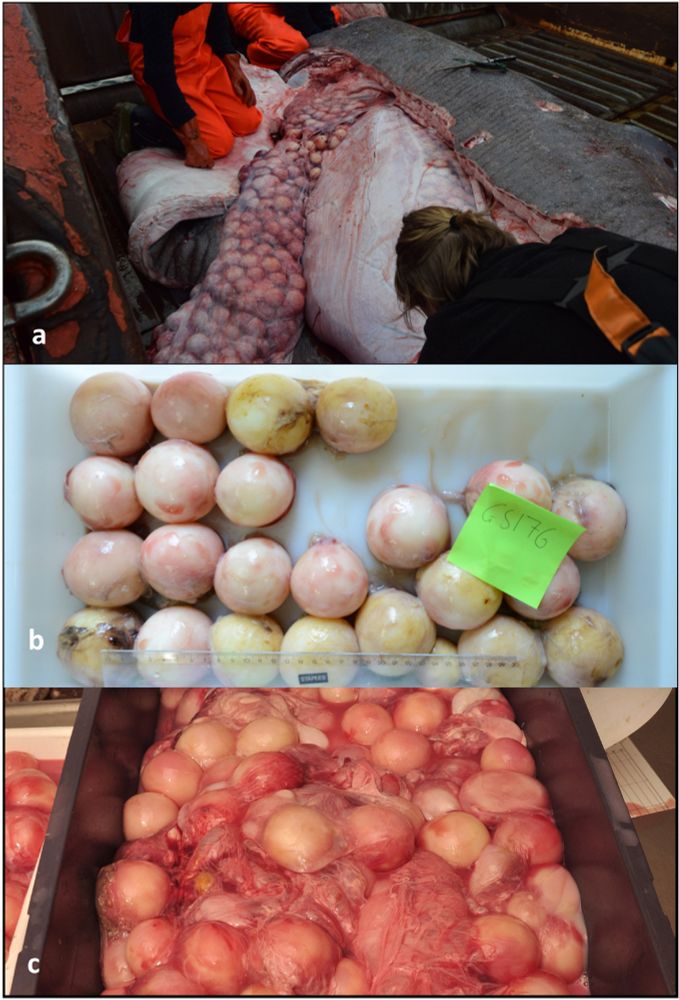
More interesting Greenland shark reproduction tidbits
- Male do not mature until they are at least ~2.6 m
- Females do not mature until they are at least ~3.9 m
- It is estimated that they produce 200–324 pups per pregnancy
- new born pups are 35-45 cm
journals.plos.org/plosone/arti...
04.07.2025 10:12 — 👍 1 🔁 0 💬 0 📌 0
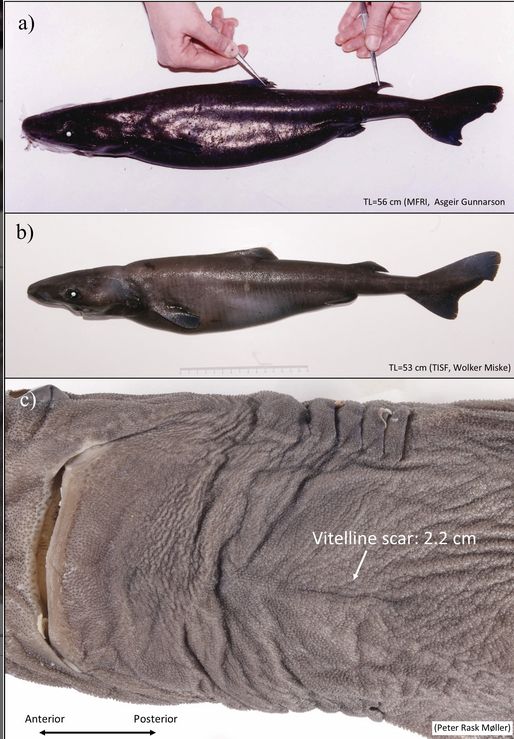
Picture of neonate Greenland sharks, with one showing the vitelline scar.
2/n Absence of neonates in the evaluated data and the scientific literature in general suggests pupping occurs in bathypelagic or benthic habitats of mid-Atlantic Ridge and/or the Irminger Sea.
03.07.2025 11:17 — 👍 1 🔁 0 💬 0 📌 0
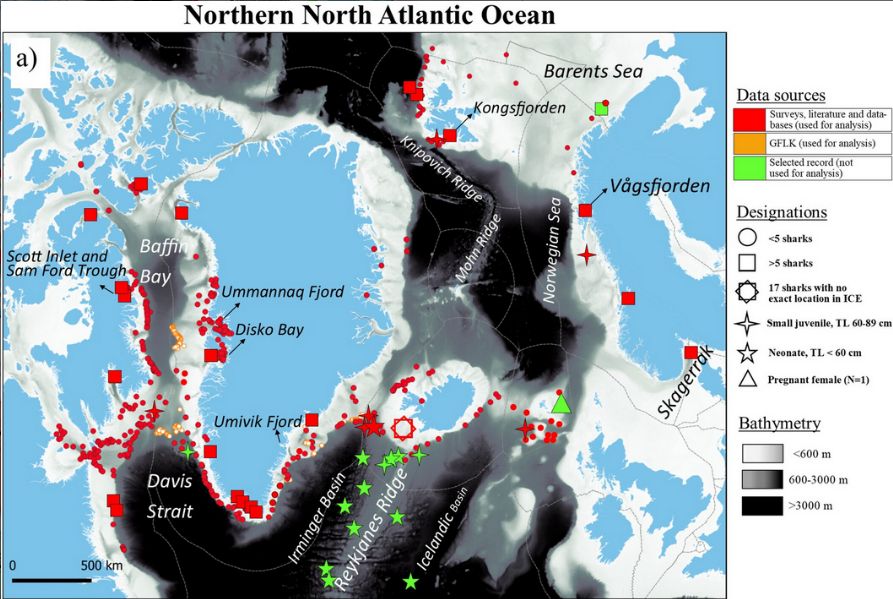
1/n Fascinating study collating records of Greenland shark across the Atlantic
– males and subadult females found in cold arctic water
– adult females reside in warmer Atlantic water
– large juveniles are common both in high-Arctic and temperate areas
onlinelibrary.wiley.com/doi/10.1002/...
03.07.2025 11:17 — 👍 0 🔁 0 💬 1 📌 0

A scientific compound figure showing an adult Gasterochisma specimen. The first image shows the whole animal - it is generally shaped like a tuna, but has a small eye and a big forehead, and has huge scales all over its body. The second and third images are close-ups of the head with anatomical features labelled. Credit: Santos & Nunan 2014
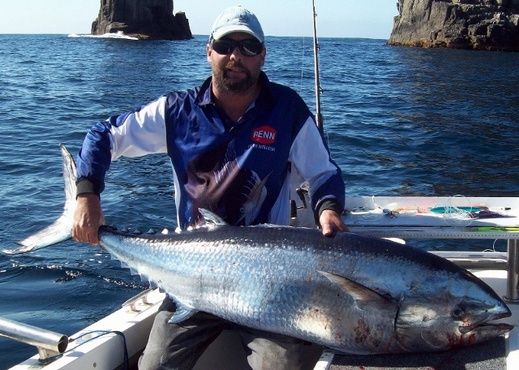
An angler posing with a recently caught Gasterochisma specimen aboard a small fishing vessel close to some rocks. The scales are so shiny you can see reflections in them. The fish is quite big, perhaps 150cm long, and apparently weighed 32kg. Credit: Wade Pelham, RedMap.
Every so often I come across a big weird fish I haven't heard of that is so odd and delightful it feels like a gift from the universe to me personally. Anyway I somehow went 25 years without hearing of Gasterochisma, this big bizarro primitive tuna beast. Lovely stuff.
02.07.2025 14:47 — 👍 4 🔁 1 💬 1 📌 0
02.07.2025 08:28 — 👍 2 🔁 0 💬 0 📌 0
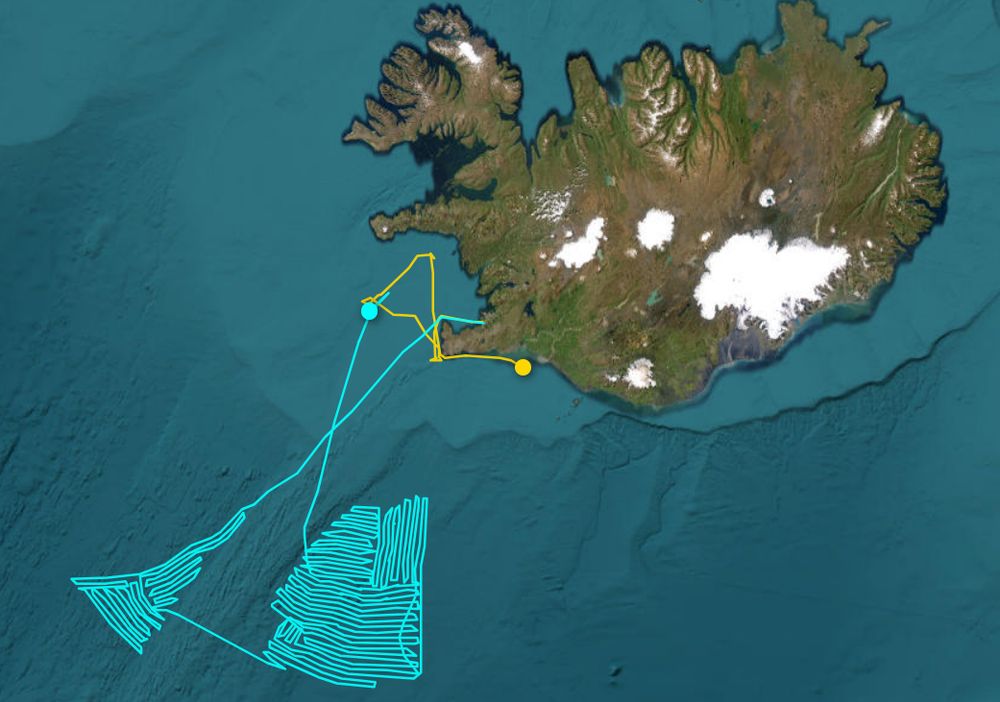
What a coincidence, we at @mfri.bsky.social are just coming to the end a three week seabed mapping cruise (blue lines). The data prepared so far is open access and can be downloaded at the MFRI website www.hafogvatn.is/en/research/....
21.06.2025 21:34 — 👍 6 🔁 2 💬 0 📌 0

Temperature is the main driver of lumpfish distribution
Lumpfish spawn around the coast of the Nordic countries with the young migrating away from the coast as they grow, but where do they go? The new
Lumpfish spawn around the coast of the Nordic countries, with the young migrating away from the coast as they grow. New research shows that temperature is the main driver of lumpfish distribution in the Nordic Seas.
More here: www.hafogvatn.is/en/about/new... #lumpfishresearch #marinebiology
03.06.2025 13:22 — 👍 1 🔁 1 💬 0 📌 0
🏊 Swimmer #RossEdgley is taking on 1,000 miles in 100 days - alongside killer whales 🐋 through 130ft waves 🇮🇸 🌊
🧑🔬 This epic #swimforscience is also an innovative #citizenscience mission‼️
🧬 Ross will collect #eDNA for 🧐 in #BioProtect in 🤝 with
@mfri.bsky.social & @matisiceland.bsky.social
🤗 Coming 🔜
15.05.2025 13:16 — 👍 7 🔁 4 💬 0 📌 0
Ross Edgley will attempt a historic first: 1,610 km swim around the entire coastline of Iceland. Along the way, his support vessel will collect eDNA samples, and conduct microplastic monitoring, and marine mammal identification.
16.05.2025 09:44 — 👍 0 🔁 0 💬 0 📌 0
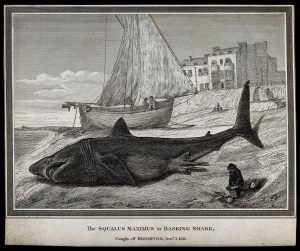
Basking shark historical sketch.
Friends, I am seeking a historian in either Irish or Scottish lore specialized in leviathans, basking sharks, or any other marine creatures.
15.05.2025 01:35 — 👍 50 🔁 28 💬 11 📌 2
Interesting, could you send me a copy james.kennedy[at]hafogvatn.is
14.05.2025 10:58 — 👍 0 🔁 0 💬 0 📌 0
Productivity (primary or secondary) did not appear to influence the distribution of lumpfish.
The distribution of juveniles is likely driven by hatching location and ocean currents. (5/n)
13.05.2025 10:31 — 👍 0 🔁 0 💬 0 📌 0
Lumpfish are absent from areas south of Iceland and much of the North Sea. While lumpfish are present in the North Sea, they are much less abundant than in the Nordic Seas. The lower occurrence in the North Sea and south of Iceland appears to be driven primarily by temperature. (4/n)
13.05.2025 10:31 — 👍 0 🔁 0 💬 1 📌 0

Juveniles and adults were found at different temperatures. Juveniles occurrence peaked at ~6-8°C while adults peaked at ~4-7°C. Occurrence dropped dramatically at temperatures >12°C. (3/n)
13.05.2025 10:31 — 👍 0 🔁 0 💬 1 📌 0
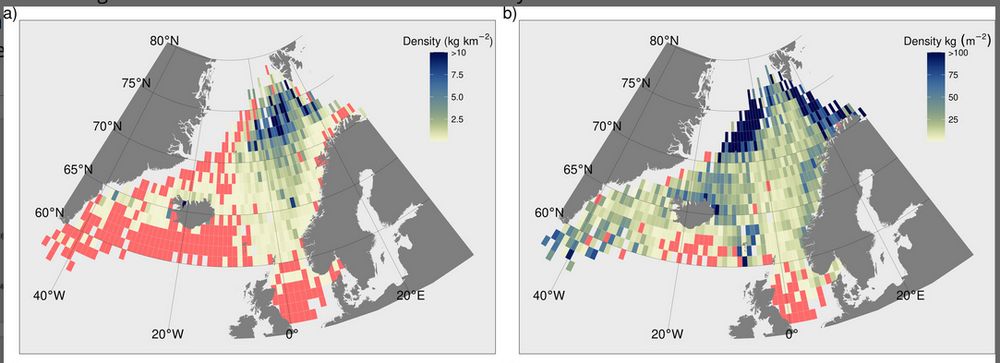
The highest densities of juveniles (<18 cm) are in the central Norwegian Sea (left), whereas highest densities of adults are northeast and northwest of the Norwegian Sea (right).
Red indicates an area where that lifestage was never caught in the history of the survey (2010-2023). (2/n)
13.05.2025 10:31 — 👍 0 🔁 0 💬 1 📌 0
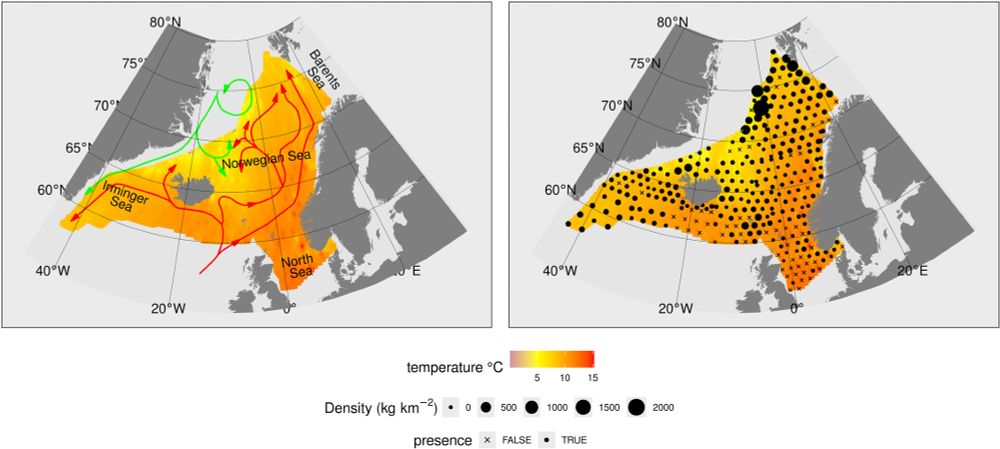
When lumpfish are not at the coast spawning (Cyclopterus lumpus), where are they? Turns out, almost everywhere in the Nordic Seas.
New paper documenting the summer distribution of lumpfish doi.org/10.1111/fog..... (1/n)
@mfri.bsky.social
13.05.2025 10:31 — 👍 3 🔁 1 💬 1 📌 0
Meet the Manefish, Caristius macropus. Named for their distinctive shape, macropus means large foot. This fish was observed in Monterey Bay 483 meters (1584 feet) deep in August of 2018. #MBARIFromTheVault
06.05.2025 19:53 — 👍 283 🔁 82 💬 5 📌 8
Apart from travelling at sea, on foot or in books, I'm a biologist with interests in marine history, fish ecology and management.
The ultimate industrial capitalist system is the global fishing industry
Biology professor in the Theoretical Ecology Group, Deputy Head of Department of Biological Sciences, University of Bergen. Sustainability, evolutionary ecology, marine ecology, fisheries, food from the ocean.
I like fish + fishing and study both as professor for integrative fisheries management (IFishMan) at Humboldt-Universität and IGB in Berlin. Editor of Fish Fish. and Z. für Fischerei. Father of two and into independent music. Read more at www.ifishman.de
Fisheries Ecologist, PhD 🦈🐟
Ecosystem-based management, sharks, fisheries, sustainable seafood🇧🇻🇺🇲 Yoga, cats, spearfishing 🐈⬛
📙My book on Marine EBM is available for pre-order now! https://tinyurl.com/MarineEBMBookHaugenLink
jannehaugen.com
A global initiative by the Nippon Foundation-GEBCO in relentless pursuit of achieving a complete map of the ocean floor by 2030 Endorsed by the UN Ocean Decade
Chief Scientist @CefasGovUK Executive Agency of His Majesty’s Govt @DefraGovUK
Science, evidence and advice for decision-making on sustainable use of the marine environment
#CefasScience #OneHealth 💙
Who are Cefas? https://linktr.ee/cefasgovuk
The Nordic Borealization Network (NordBorN) is a collaboration platform across the Nordic countries to understand the implications of borealization in Nordic terrestrial ecosystems.
A 4-year Horizon Europe #MissionOcean project aiming to restore & protect marine #biodiversity in the #Atlantic & #Arctic Ocean through an innovative Area-Based Management Decision Support Framework (ABM-DSF).
https://bioprotect-project.eu
Wildlife Researcher at NINA
Otoliths, Isotopes, Ancient and modern fishes
Graduate Student, Yale E&EB
YC '23
Call me the ancient mariner cus I'm about to Bust a Rime
https://chasebrownstein.weebly.com
https://scholar.google.com/citations?user=hGy-fr8AAAAJ&hl=en&authuser=1
he/him
Custom illustrations for biologists by Julie Johnson. • #sciart #scicomm • species paintings • scientific diagrams • figure design for ecologists and evolutionary biologists • www.lifesciencestudios.com
🇪🇺 🇮🇸 Þetta er aðgangur Sendinefndar Evrópusambandsins á Íslandi.
This is the official account of the Delegation of the European Union to Iceland.
🌐 https://lnk.bio/EUinIceland
➡️ @claraganslandt.bsky.social is the EU Ambassador to Iceland
Senior Research Scientist, Norwegian Institute for Nature Research | Population ecology, demography, wildlife management | Delvis integrert i det norske samfunnet | bksandercock.wordpress.com
Marine evolutionary ecology, genomics and restoration at GEOMAR Kiel, Germany's Ocean Institute. Fascinated with ocean life, its adaptation and protection. Focus Baltic Sea & other world areas. Pet species cod, seagrass, comb jellies, phytoplankton
58th European Marine Biology Symposium #EMBS58, 06-09. July 2025, Bodø, Norway
https://www.embs-symposium.com/
Dr Yi-Kai Tea | Ichthyology Curator, The Australian Museum Research Institute
| Systematic ichthyology | Wildlife photographer | 🏳️🌈he/him
Master’s student at University of Arizona | researching a native SW desert fish: Sonora sucker | she/her | #TeamFish 🐟 | #BiinSci 🏳️🌈 | Neurodivergent 🧠
Academic Director, University Centre of the Westfjords 🇮🇸
Professor, UW Biology / Santa Fe Institute
I study how information flows in biology, science, and society.
Book: *Calling Bullshit*, http://tinyurl.com/fdcuvd7b
LLM course: https://thebullshitmachines.com
Corvids: https://tinyurl.com/mr2n5ymk
he/him
I'm from #Iceland, deeply passionate about #climate issues. As a #humanist and #atheist, I embrace a worldview centered on reason, compassion, and evidence, while remaining open to the many facets that define me.
















